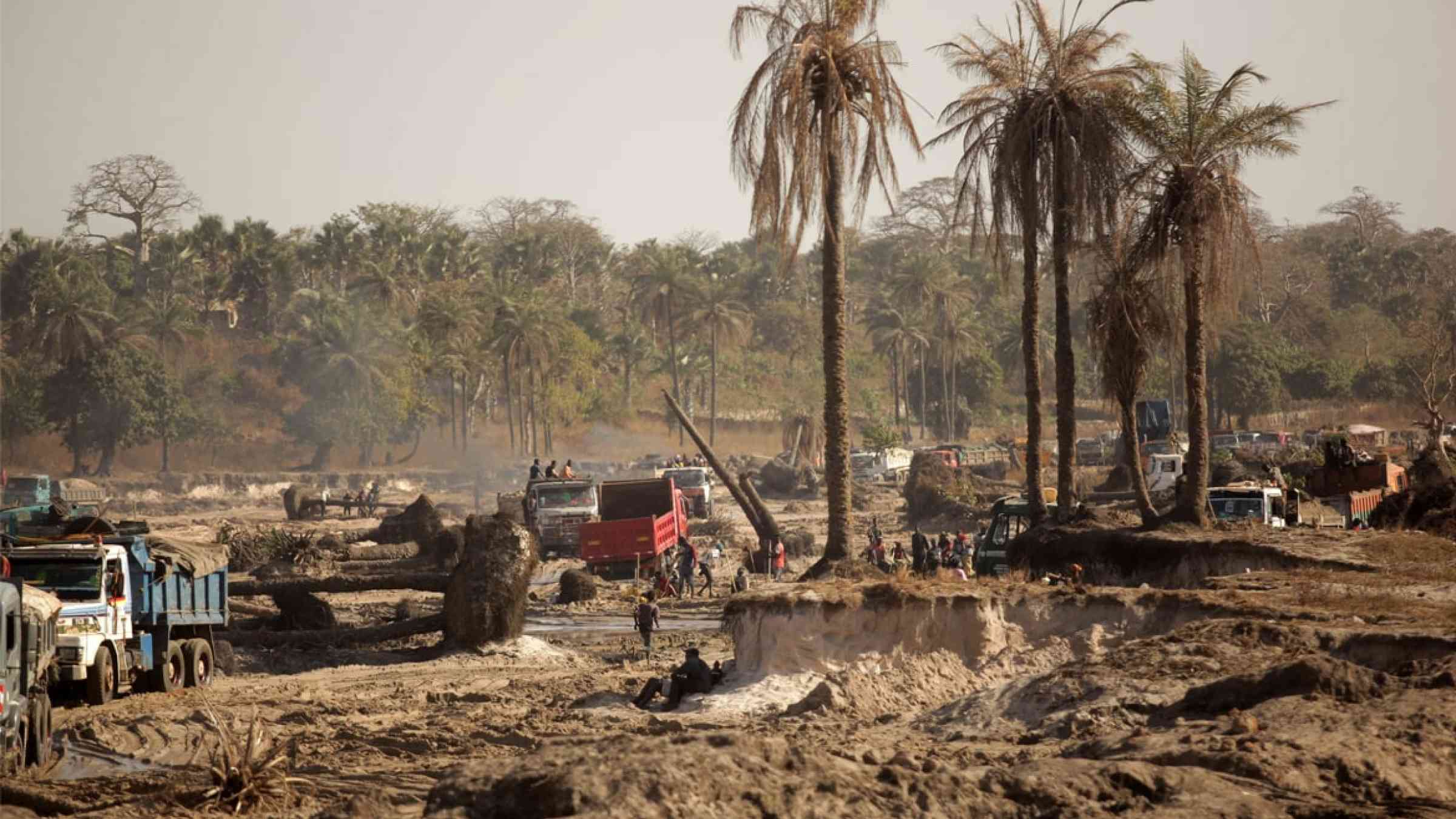Please help us improve PreventionWeb by taking this brief survey. Your input will allow us to better serve the needs of the DRR community.
Deforestation is flooding West African coasts

In 2015, Adaku Echendu suddenly awakened from her sleep in the early hours of the morning. Sixty centimeters of water were flooding her entire house in Port Harcourt, Nigeria. She woke her husband and children to leave, but outside everything was worse, and the family’s car was covered by water that continued to rise because of the incessant rain.
Immediately, Echendu and her neighbors called Nigeria’s National Emergency Management Agency, who told them to wait. No help came that night.
After the traumatic experience, Echendu’s family moved to another apartment. “Maybe this is one event, it won’t happen again,” she remembered thinking. But it happened again in 2016. And again in 2017.
After losing their home three times, the family finally left Nigeria in 2018.
“I am privileged because I was able to leave, but there are [many] more people who don’t even have any family to move with,” said Echendu.
In 2021, the United Nations estimated that more than 1.2 million people in 13 countries in West and central Africa were injured, killed, or displaced or had their homes destroyed by heavy rains and floods.
Now, scientists warn that special attention should be paid to coastal countries, where heavy rains associated with deforestation are increasing flood risk for the growing urban population.
“A Perfect Environment to Trigger Storms”
Deforestation in Africa is occurring at about twice the world rate, with the continent as a whole losing about 4 million hectares every year. The loss of tree cover along Africa’s southwestern coast in particular has increased, mostly because of agricultural land use, urbanization, and conflict.
In the Amazon, which is also experiencing tree loss in a tropical environment, evidence indicates that deforestation contributes to a decrease in precipitation.
Coastal countries of southwestern Africa are experiencing the opposite effect. The frequency of storms in deforested areas in Ghana, Ivory Coast, Liberia, Nigeria, and Sierra Leone has doubled since 1991. Forested areas in these countries have also experienced an increase in storms, but only by about 40%.
These findings were published recently in the Proceedings of the National Academy of Sciences of the United States of America (PNAS) by scientists from the UK Centre for Ecology and Hydrology, who analyzed 3 decades of forest cover and thunderstorm observation satellite data.
The lead author of the study, meteorologist Christopher Taylor, explained that the increase in storms near the coast is caused by the land-sea thermal interaction.
As trees have a cooling effect in the atmosphere, deforestation creates a warm area that draws in sea breezes from the ocean during the daytime, producing moisture. “And there’s only one way for that moisture that gathers in the air to go. It has to go up, creating a perfect environment to trigger storms,” Taylor said.
Thus, deforestation has worsened the heavy rains that were already recurrent in the region, increasing the probability of flooding. “We’re witnessing the impact on heavy rainfall of the late stages of deforestation in West Africa,” Taylor and his coauthors wrote.
Addressing Threats with Infrastructure and Political Will
Preventing or reducing risks is the best way to cope with floods, said Benjamin Lamptey, a meteorologist at the University of Leeds who was not involved in the PNAS study.
For Lamptey, it’s necessary to help the most vulnerable communities by building weather forecasting infrastructure for any given region, especially in the least resilient cities—those where drainage and other infrastructure are often ill equipped to cope with major floods.
Echendu says many communities in Nigeria fall into that category. “[Most communities in Nigeria] don’t have good roads. Don’t have drainage. Don’t have waste management. These are all governance failures,” said Echendu, who is now conducting research on the social impacts of flooding at the School of Environmental Studies at Queen’s University in Kingston, Ont., Canada.
For Echendu, the lack of flood management policy in Nigeria is a matter of political will. Federal and regional governments, she said, have too often focused on responding to floods and not on preventing them by addressing poor infrastructure, bad urban planning, and deforestation.
The same issues affect Freetown, Sierra Leone, said Uzebba Kanu, a professor in the Department of Geography at the University of Sierra Leone.
In August 2017, more than a thousand people near Freetown died in a mudslide produced by floods due to heavy rains and unstable soil associated with excessive removal of vegetation.
Kanu said this tragedy illustrates how “actions are always taken when deaths, damages, and everything have already occurred.” Although an early-warning system could have saved lives, she said, “people in Freetown still don’t have those facilities. We live by God’s mercy.”
Explore further
Please note: Content is displayed as last posted by a PreventionWeb community member or editor. The views expressed therein are not necessarily those of UNDRR, PreventionWeb, or its sponsors. See our terms of use
Is this page useful?
Yes No Report an issue on this pageThank you. If you have 2 minutes, we would benefit from additional feedback (link opens in a new window).